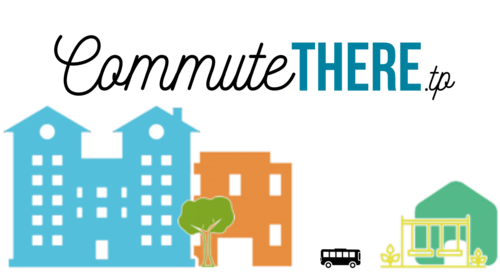AY1516 T2 Team CommuteThere Overview
Project Background
Singapore is known to be one of the most sustainable cities around the world. As the chairman of the World Urban Campaign Steering Committee at UN-Habitat has stated, “Singapore is at the leading edge of sustainability.” The latest Siemens’ Green City Index for Asia has also measured Singapore to be the best-performing city in the region in terms of sustainability. Due to land scarcity, urban planners had to intentionally plan Singapore to become a more liveable and sustainable city. One of the methods of building a city that is liveable and sustainable, is to create an environment that has an efficient public transport system.
Project Motivation & Aim
As mentioned in the background, the issue of land scarcity in Singapore also means that urban planners have to find ways to build cities in such a way that they are compact and closer together. This will help to preserve communities and public spaces in each town. As such, there is a greater need for careful urban planning in Singapore, so that points of interests to the public, can be easily accessed by citizens, with the use of public transport. Some examples of public transportation services in Singapore will include, the Mass Rapid Transit (MRT) system and public buses. In our project, we also extended public transportation to include walking, as walking can also be a mode of transportation for citizens.
By having an efficient transport system and effective urban form, urban planners can encourage residents to use public transport and walk more. This in turn, will reduce, and it may even eliminate the need for the usage of private cars. As such, the living environment of cities can improve drastically- roads will be less congested, the air will be significantly cleaner, and residents will be able to enjoy a higher quality of life. Also, previous research have shown that there is a strong correlation between public health and the greater use of public transportation and walking. There are advantages such as an improvement in public health due to a reduction in obesity rates and cleaner air quality and an improvement in mental health. As such, we can see that an improvement in public health can mean that residents can enjoy a better quality of life.
Seeing the importance of having an efficient and effective transportation system, the aim of our project would be to analyse the existing urban form, the public transportation system, and see if it caters to the needs of residents.
Scope of Project
For our project, we have decided to focus our research on Tampines. Tampines is known to be the most outstanding and well-planned new town in Singapore. Built in the 1970s, Tampines new town has since developed into an institutional, social, recreational and commercial hub of the eastern part of Singapore. Its new town model has even won an award for its outstanding housing design and contribution to human settlement development. Now, it is home to over 200,000 people with a population density of 47,000 people/km. On top of it, urban planners and the government have been focusing their research on Tampines. The government has released an initiative, called, “Re-imagining Tampines”, to generate ideas to make Tampines even more liveable. These ideas will seek to improve the liveability of Singapore by designing better walking, cycling and better public spaces. Looking at the boundaries of Tampines itself, we can also see why it is a suitable case study for our project. Tampines is surrounded by waterways, expressways, and in-accessible areas such as Paya Lebar Air Base. As such, it is easier to conduct a research on an enclosed planning area in Singapore. This will facilitate us in our research, as we seek to understand commuters’ travelling patterns within the town itself.
Also, we will be dividing our research into 3 main groups, the adult, elderly and students. This is because each of these groups consist of commuters with different travelling patterns and points of interests that they are interested in travelling to. We have managed to obtain datasets for these 3 categories, with the explanation in section 3 of the report.
Aim & Objectives
Objective 1: Analyse commuting patterns for the 3 different age groups (i.e Adult, Elderly and Student)
- Sub-objective 1.1: Analyse overall commuting patterns for the 3 different age groups
- Sub-objective 1.2: Analyse inter town commuting patterns for the 3 different age groups
- Sub-objective 1.3: Analyse intra town commuting patterns for the 3 different age groups
- Sub-objective 1.4:Analyse intra town commuting patterns for the 3 different age groups who made at least 4 trips in one week during morning peak period
Objective 2: Analyse multimodal transportation patterns for 3 different age groups
- Sub-objective 2.1: Analyse transfer time interval for buses and MRT for the 3 different age groups
- Sub-objective 2.2: Analyse relationship between walking and bus transportation using Student group as a proxy
